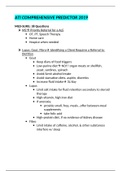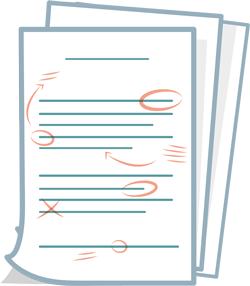Exam (elaborations)
ATI COMPREHENSIVE PREDICTOR 2019
- Course
- Institution
ATI COMPREHENSIVE PREDICTOR 2019 MED-SURG: 38 Questions MS Priority Referral for a ALS • OT, PT, Speech Therapy • Home care • Hospice when needed Lupus, Gout, Fibro Identifying a Client Requires a Referral to Dietitian • Gout Keep diary of food triggers Low-purine di...
[Show more]



